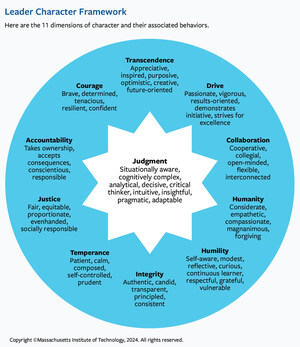CAMBRIDGE, Mass., July 14, 2021 /PRNewswire/ -- Executive women are narrowing the gender pay gap by commanding higher percentage pay increases than men when changing employers, according to a new article released today by MIT Sloan Management Review. A new analysis shows that women get bigger raises in the external labor market when moving into senior positions at highly visible public companies with a global presence, and in industries where women are traditionally underrepresented.
Among senior executives, the study found that pay increases for job-switching women were 9.41 percentage points higher than increases for men. The visibility of senior positions may be partly driving organizations to offer women higher relative increases: When they move to publicly traded companies, women gain more, with average pay increases of 33.2% – 11.5 percentage points higher than men's average increases of 21.7%.
"Increasing the share of bonus-based compensation is an important factor for how women can narrow pay differences," says Boris Groysberg, article coauthor and the Richard P. Chapman professor of business administration at Harvard Business School. "Executive women have an underexploited opportunity to shrink the gender gap further by negotiating a greater share of performance-based pay — particularly in contexts where they are highly visible, scarce, or both."
To be clear: Higher increases are not the same thing as higher pay. Women are still paid, on average, less than men both before and after an executive job switch. Men's compensation was 19.5 percentage points higher than women's in the prior job and 14 percentage points higher in the new job. But in some situations, external moves appear to reduce pay disparities.
Key findings include:
- Performance-based bonuses are a tool for leveling the compensation playing field. The gender pay gap is further narrowed when executive women negotiate and include performance-based bonuses in addition to their salary-based compensation package. When the analysis controlled for performance-based compensation, the difference in pay raises between men and women disappears, dropping from 6.2 percentage points to zero.
- The relative scarcity of women in candidate pools can boost salary offers. In industries where women are historically underrepresented, such as logistics, manufacturing, and construction, women get higher raises. Women who switched jobs in such industries received an average pay increase of 34% – 13.2 percentage points higher than the 20.8% increase received by men.
- Scarcity-driven labor costs may also stem from the family effect. Women continue to bear the brunt of family concerns in many households, so job switches – which can disrupt continuity of spouses' careers and schooling for children – are often more difficult for them. This means enticing women with families may require additional financial rewards. When comparing women's and men's pay increases among two populations — executives who have a partner and/or children and those who have neither —women with partners or children received increases that are 17.9 percentage points higher, on average, than increases for men.
- The external labor market (vs. promotions from within a company) decreases the variance in pay, helping executive women who are traditionally paid less. For both men and women, pay differences based on attributes (experience and education) and job types are more muted in new jobs than in prior jobs. The standard deviation of residual pay differences among men drops by nearly 70% in new jobs compared with the prior jobs. If not for this drop in residual pay differences, women would have lost ground by nearly 4 percentage points in their relative position on wage distribution when they switched jobs.
"Picture a long-distance foot race with senior-level women running in the back of the pack," describes Eric Lin, article coauthor and assistant professor in the Department of Behavioral Sciences and Leadership at the U.S. Military Academy at West Point. "Women can catch up with the lead runners, their male counterparts, because the variance in pay decreases overall and the pack tightens so everyone is running closer together."
The article titled, "Job-Hopping Toward Equity," is based on an analysis of more than 2,000 individual career histories, publicly available on LinkedIn, proprietary data on executive employment from a top-five placement firm that specializes in filling senior roles, and interviews with 11 search firm executives.
MEDIA CONTACT:
Veronica Kido
[email protected]
508-242-5134
About the Authors
Boris Groysberg (@bgroysberg) is the Richard P. Chapman Professor of Business Administration at Harvard Business School, Faculty Affiliate at the HBS Gender Initiative, and coauthor, with Colleen Ammerman, of Glass Half-Broken: Shattering the Barriers That Still Hold Women Back at Work.
Paul Healy is the James R. Williston Professor of Business Administration at Harvard Business School. His research focuses on governance.
Eric Lin (@LinXEric) is an assistant professor in the Department of Behavioral Sciences and Leadership at the United Military Academy at West Point. His research focuses on human capital and talent management.
About MIT Sloan Management Review (MIT SMR)
MIT Sloan Management Review (MIT SMR) is an independent, research-based magazine and digital platform for business executives published at the MIT Sloan School of Management. MIT SMR explores how leadership and management are transforming in a disruptive world. We help thoughtful leaders capture the exciting opportunities — and face down the challenges — created as technological, societal, and environmental forces reshape how organizations operate, compete, and create value.
Connect with MIT Sloan Management Review:
SOURCE MIT Sloan Management Review

Related Links
WANT YOUR COMPANY'S NEWS FEATURED ON PRNEWSWIRE.COM?
Newsrooms &
Influencers
Digital Media
Outlets
Journalists
Opted In






Share this article